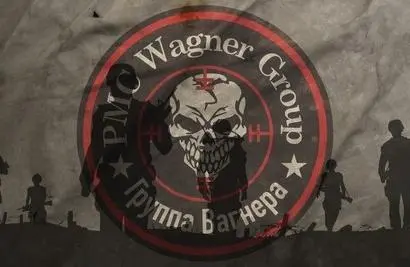Abstract: Violent extremism is a persistent threat and will continue to be so for the foreseeable future. Understanding cognitive and affective issues, which make individuals inclined to adopt violent extremism or recruitment by violent extremist groups, is relevant in proposing better ways of countering this issue.
Problem statement: How to better understand how individuals come to espouse violent extremism, the mechanisms used to lure these individuals in, and the communication and narrative tools to counter this phenomenon?
So what?: White supremacism, in its many forms, remains an important risk factor for violent extremism in Western societies and a threat to progressive social changes. Understanding its underlying factors and drivers by identifying vehicles and dynamics through which white supremacism has been able to successfully spread its ideology is important to craft better interventions, allowing governments and civil society a better understanding of how to harness communication tools, such as constitutive rhetoric, in ways that serve the purpose of countering violent extremism (CVE).

Source: shutterstock.com/Bachurin Maksym
White Supremacism and Violence
White supremacism and its violence are a growing concern in Western countries; it encompasses various groups that espouse a worldview that rejects those different from themselves because they believe they are more important than others just because of being white. Though there are nuances and differences in various definitions of white supremacy, the idea, generally, derives from pseudo-normative elements of ‘whiteness’, such as being Christian and heterosexual, with a heavy weight placed on male individuals as leaders.[1] Additionally, in some places, like the United States, white supremacy, compounded with nationalist sentiments on whites as the only true nationals, is heavily associated with white nationalism.
White supremacy, compounded with nationalist sentiments on whites as the only true nationals, is heavily associated with white nationalism.
The inclusion of white supremacist and nationalist groups as terrorist organisations in various countries shows their growing relevance for national and international security.[2] Furthermore, in many cases, the wave of nationalist right-wing, and especially far-right, groups in North America and Europe is directly related to groups which support some form of the idea whereby whites should be considered more important than others and, consequently, push for policies that exclude others,[3] and, in other instances, engage in extremist violence (EV). These groups include neo-Nazi, anti-Islamist, and anti-migration groups, among others.[4] For example, during the Trump Administration in the U.S., an upward trend of hate crimes was registered in many large American cities. In 2017, white supremacists committed 20 of the 34 extremist violence-related murders.[5]
In the U.S., alt-right extremist murders in the last decade exceed the number of murders committed by Islamic extremists in the same period.[6] While many point to white nationalist rhetoric used by former President Donald Trump as a driving factor in the surge of white supremacism and a validator of violence,[7] this threat has grown beyond the Trump years and the reaches of U.S. borders, as these types of groups continue to spread in different countries – in Europe, Australia and New Zaeland – and connect to date between them.[8] Therefore, it is important to understand the use of rhetoric in establishing violence as acceptable behaviour to counter violent extremism (CVE).[9]
White Supremacism, Anomie, Relative Deprivation and Risks of Recruitment
Scholars have shown that for far-right groups not associated with supremacist ideologies, political control of government is more relevant in determining their willingness to resort to violence.[10] Yet, white supremacists believe in the superiority of white, heterosexual men; anything or anyone threatening that superiority is the enemy. They also believe in the inevitability of a race war that will establish a pure Aryan nation in which enemies (including all others and White traitors) will have been cleansed. Any violent actions that accelerate this process are regarded within these groups as positive and important.[11]
In an increasingly integrated and multicultural society, white supremacists feel strained or in a state of anomie. Anomie is the “disjunction between aspirations and expectations”,[12] and it manifests as anger, perception of inequity, and frustration; it is a sense of normlessness and alienation. This is worrisome because social exclusion and inequality are some of the main causes of violent extremism, defined as the “willingness or choice to use violence, or support the use of violence, to advance particular political, religious, ideological, and social beliefs”.[13] Alienation and identity-seeking are risk factors for the engagement or recruitment of youths by extremist and radicalised groups. Various psychosocial elements and structural issues explain radicalisation itself,[14] like urbanisation, demography shifts, and diminishing economic or educational opportunities prompt feelings of social alienation; identity seeking is one possible consequence of alienation. Thus, feelings of alienation and exclusion increase the vulnerability of recruitment.
In an increasingly integrated and multicultural society, white supremacists feel strained or in a state of anomie.
Additionally, relative deprivation (RD) refers to how individuals process information about their own self – or the groups they belong to – within society by comparing oneself -or one’s group- to others. RD occurs when the resulting evaluation of that comparison is negative in that one’s self or one’s group is not provided with, or lacks, the opportunities, resources or standards as others and to which one (or the group) feels entitled.[15] Thus, this concept is underlined by cognitive and affective factors (feelings and perception/intellectualisation); as subjective as it can seem, research has shown it helps explain action and collective action regarding social and political issues, whether the injustice is real or only perceived.[16] Additionally, RD is a stronger predictor of non-normative social or political action as compared to conditions of actual deprivation, which, in turn, highlights that RD does not necessarily imply that conditions are observed objectively.[17]
Furthermore, the social dimensions of RD imply that it can be felt about the past, meaning the interpretation of injustices of the past as regards oneself or one’s group (collective memory), which also helps explain enduring and recurring grievances in specific groups, whether the injustices are real or perceived.[18] These, in turn, can be exploited for economic or political gains by people or groups with specific agendas which align with or can be served by individuals or groups experiencing RD.[19] Thus, there are elements that can connect RD to violent extremism, with an emphasis on its affective component (feelings) over its cognitive ones (the intellectualisation of getting less than one is entitled to).
Lacking opportunities and perception of alienation affect self-worth assessment, but group identity and the feeling of belonging contribute to a perception of goal achievement. Adherence to groups helps individuals associate themselves with the groups’ established identity and value, and it is a collective solution for youths to ‘resolve’ their perceptions of blocked attainment and eliminate alienation.[20] Groups also provide individuals with an identity that engulfs them; belonging additionally builds a distinction between “us” and “them”. While this reduces identity seeking, it separates groups and draws lines between them.
White Supremacism and Constitutive Rhetoric
A commonality among white supremacist groups like Skinheads, Aryan Nations, KluKluxKlan, World Church of the Creator and Christian Identity, among others, is that their rhetoric places their members as heroes performing God’s work (through violent means), assuring the existence of Whites.[21] White supremacist groups have used different rhetorical devices and narrative techniques (like quest narratives) to disseminate their ideologies[22] and recruit people by “valorising self-sacrifice and inciting individuals to take real-world action against historic wrongs… and eliminate… existential threat[s]”.[23]
A commonality among white supremacist groups like Skinheads, Aryan Nations, KluKluxKlan, World Church of the Creator and Christian Identity, among others, is that their rhetoric places their members as heroes performing God’s work, assuring the existence of Whites.
In studying The Turner Diaries, a white supremacist ideological text, Goehring and Dionisopoulos[24] reveal how constitutive rhetoric can work beyond political or religious manifestos. This work of fiction creates a target audience to which it provides a common goal: a world where whites –threatened by a growingly multicultural and integrated society – regain supremacy by violent means. This book serves as a guideline to many white supremacist groups, and it draws clear lines between those who will carry out the white revolution and all those who are the enemy, effectively ‘othering’ and separating groups, including whites, that do not share these views.
This highlights the power of constitutive rhetoric on individual ideology, identity and action. Hill[25] posits that while ideas of racism, sexism, and even sexuality have rested upon the idea of biological differences, rhetorical research understands it as an ideological construct and that its ideological power is what determines inter-group relations. Therefore, the ideological constitution of individuals through rhetoric happens through forms of discourse; people adopt an ideology and may decide to act upon it after exposition to its discursive form or narrative.
Additionally, these discursive forms constitute persuasive appeals to instill an ideology. As ideology provides a form of identity that enables specific paths for decision-making, constitutive rhetoric continuously “offer¨[s] individuals ideological options to reposition their identity”,[26] where identity is understood as an entity wherein continual ideological struggle occurs, even at a social level.
Within this context, along with ideology and identity, constitutive rhetoric serves as a moralising tool.[27] The constant flux of competing constitutive rhetoric presents the opportunity to introduce a new ideological framework that shapes identities and helps other identities resolve tensions, contradictions or conflicts within the material world.
This dissonance reduction function with respect to identity is of particular interest because it shows that constitutive rhetoric, through narrative, provides information and positions that can resolve identity tensions from previously acquired narratives. More importantly, constitutive rhetoric can drive individuals away from a former identity and ideology and instil a new morality in them, with solid ideas of good and evil and how these motivate action.
Emergent Norms
Emergent norm theory suggests that, in the face of a crisis, new norms – different from those previously established – can emerge in a group acting collectively. In this context, collective action is any social activity that aims to supersede institutionalised or traditional practices and frameworks because of the perception that these conventional norms have ceased to function as appropriate guidelines of social behaviour.[28] At the same time, collective behaviour displays emergent social structures in two possible ways: relationships (stressing inexistent previous links) or organisations (highlighting ad hoc labour division).[29]
Collective action is any social activity that aims to supersede institutionalised or traditional practices and frameworks because of the perception that these conventional norms have ceased to function as appropriate guidelines of social behaviour.
In this emergence process, people follow others, who distinctively act as a guide to create new norms, with two implied consequences: First, with the emergence of the new behaviour deemed appropriate, it becomes a norm within the collective. This comes with new social pressure to conform to this new norm, avoid deviance, and quell dissent or discontent. Second, the distinct people that drive or direct new behaviour are essential to forming new norms; within this theoretical approach, these people are called keynoters.[30]
In the context of extremist violence, through emerging social norms, accepting violence is an increased risk factor for recruiting at-risk individuals.[31] White supremacist groups have both the rhetoric and the collective action structures that enable the emergence of violence as an appropriate solution to their perceived White existential threat.
Levin and Reitzel’s[32] findings of an increase in hate crimes after the ascension of former President Donald Trump are concurrent with the perception that Trump is a validator of hate speech and hate politics[33] fueling violence. This characterisation is consistent with the tenets of emergent norm theory, in that a group (white supremacists) facing a crisis (their perceived existential threat) looks out for distinct people (keynoters) to show them how to act in the face of the threat. In this case, there are several keynoters: leaders of different white supremacist groups finding a second layer of validation at the highest possible level.
Communication Tools Against Extremist Violence
White supremacist groups are reactionary and resent the progressive social change that has empowered all those who are not like themselves (particularly white). Progressive social change has created a social paradox for some white, heterosexual men; as society becomes multicultural, it becomes “less white”, spurring or inflaming the feeling of alienation.[34] Thus, alienated individuals with characteristics white supremacists prefer are at the highest risk of recruitment. At-risk individuals exhibit signs of anomie, which include economic difficulties and a lack of opportunities. Paired with changing demographics and integration, these signs increase risk. In this context, reducing the structural conditions that produce anomie in these groups is difficult, as they would mostly imply reducing social advancements for other groups.
Additionally, culturally, socially, and politically sensitive and context-dependent approaches to the rhetoric of exclusion and CVE of white supremacist groups should avoid ‘othering’ by empowering subjects to feel more secure and able to find spaces for participation. Interventions should embrace the promotion of cultural hybridity that generates cross-cultural vocabularies, fostering understanding and avoiding identity fractures and the rigidness of “us” and “them” notions,[35] or which combats in- and out-group ideas,[36] as well as the tendency to place one group over another (i.e., eliminate the sense of dominance).[37] Ideally, lifting one group out of systemic injustice should happen with the possible RD that may accompany it and with comprehensive communication approaches to prevent cognitive and affective interpretations of disadvantage from materialising in negative or non-normative political action or violence.
Interventions should embrace the promotion of cultural hybridity that generates cross-cultural vocabularies, fostering understanding and avoiding identity fractures and the rigidness of “us” and “them” notions, or which combats in- and out-group ideas,as well as the tendency to place one group over another.
Therefore, through constitutive rhetoric, governments and civil society can, and should, provide narratives that are explicitly against violence and separation from ‘others’, which counter emergent norms that condone, and even promote, violence against those considered different from one’s self. This is particularly relevant in light of the finding of extreme levels of aggression, social dominance, authoritarianism and dehumanisation of minorities in youths already affiliated with far-right movements.[38] These narratives should also instill a solid set of norms and values that help those already exposed to white supremacism to reject it and those not exposed but understood as at-risk of recruitment to stay away, with the ability to work in online and offline environments.[39]
While this paper uses white supremacism as an example of extremist violence, many concepts and mechanisms may be applied to understanding and countering other negative constitutive rhetoric, at-risk populations and violent groups. Yet, further research is needed to fully understand the links between them.
Additionally, shifting interests and attention in the geopolitical landscape may blur the continued importance of extremist violence in international security. Yet, it is of paramount relevance to underline that precisely because of heightened sensitivities towards race, ethnicity, and national origin – even when disguised as political preferences or geopolitical interests –, the world is likely to continue witnessing extreme forms of violence from supremacist groups; and security agencies must avoid dismissing or missing this threat.[40]
Moreover, although media literacy is not the focus of this analysis, its role as a way of countering noxious rhetoric and overall mis- and disinformation that lead to non-normative forms of political action and violence should be considered in any and all CVE efforts, but also in general educational curricula. Distorting narratives and misleading information have relevant cognitive and affective effects, especially in at-risk individuals; as relevant security threats worldwide, comprehensive efforts to counter them should be taken at all levels.
Distorting narratives and misleading information have relevant cognitive and affective effects, especially in at-risk individuals; as relevant security threats worldwide, comprehensive efforts to counter them should be taken at all levels.
Finally, though the main focus of this paper is understanding how individuals come to espouse extremist views that foster violence as a means for political action and how communication vehicles are used to radicalise and recruit individuals into espousing these ideas, it is beyond the scope of this paper to identify a specific vehicle or channel as the best possible form to counter their efforts. Nonetheless, the literature suggests that CVE has a greater chance of succeeding through these means – especially constitutive rhetoric. However, it requires longer interventions, which may, in turn, prove difficult to implement in certain economic and administrative scenarios.
Alejandra López de Alba Gómez holds an undergraduate degree in History from UNAM, an MA in Security Studies from Georgetown University, and an MA in Communication from Johns Hopkins University; has additional studies on intelligence, international and national security, political image, and negotiation; and has published articles on topics related to international security, use of violence by non-state actors, and the many intersections between information, narrative, and security. The views contained in this article are the author’s alone and do not represent the views of any organisation she collaborates with.
[1] For a primer on the meaning and implications of white supremacy: Niccolo Caldararo, “White Supremacy: Origins and Evolution, a Brief History of Who is Included and Excluded and How it Has Created a Crisis in America;” James W. Zanden, “The Ideology of White Supremacy;” European Center for Populims Studies, “White Supremacy” Southern Poverty Law Center, “White Nationalist;” Anti Defamation League, “White Supremacy.”
[2] Henry Belot, “Australia Lists Neo-Nazi Organisation. The Base and Hezbollah as Terrorist Organisations;” Perry Nick, “New Zealand Declares Proud Boys a Terrorist Organization;” Nathan A. Sales, “Domestic Extremism in America.”
[3] Daniel Koehler, “Right-Wing Extremism and Terrorism in Europe Current Developments and Issues for the Future;” Merrill Perlman, “The Key Difference between ‘Nationalists’ and ‘Supremacists’;” ProtectUK, “The Threat from Extreme Right-Wing Terrorism.”
[4] Annelies Pauwels, “Contemporary Manifestations of Violent Right-Wing Extremism in the EU: An Overview of P/CVE Practices, 2021.”
[5] Chris Baynes, “Murders by White Supremacists in US More than Doubled in 2017.”
[6] Jonathan Greenblatt, “The Resurgent Threat of White-Supremacist Violence.”
[7] Chris Cillizza, “The Dangerous Consequences of Trump’s All-out Assault on Political Correctness;” R. Hassanein, “‘Making America Hate Again’ – The Correlation between Trump’s Anti-Muslim Tweets and Hate Crimes;” Lucy Pasha-Robinson, “Donald Trump Quietly Froze Funding to Groups Fighting Right-Wing Terror and White Supremacism Months Ago;” Ed Pilkington, “Feel the Love, Feel the Hate –My Week in the Cauldron of Trump’s Wild Rallies;” Jennifer Rubin, “Trump’s Era of Hate;” Stan Adele M., “The Hate at the Heart of Power.”
[8] Cai Weiyi and Simone Landon, “Attacks by White Extremists Are Growing. So Are Their Connections.”
[9] David M. Nealand and Brenda D. Philips, “An Examination of Emergent Norms and Emergent Social Structures in Collective Behavior Situations;” R. H. Turner and L. M. Killian, CollectiveBehavior.
[10] Patrick S. Forscher and Nour Kteily, “A Psychological Profile of the Alt-Right;” James A. Piazza, “The Determinants of Domestic Right-Wing Terrorism in the USA: Economic Grievance, Societal Change and Political Resentment.”
[11] Randy Blazak, “Isn’t Every Crime a Hate Crime?: The Case for Hate Crime Laws;” Charles Goehring and George N. Dionisopoulos, “Identification by Antithesis: The Turner Diaries as Constitutive Rhetoric.”
[12] Randy Blazak, “White Boys to Terrorist Men: Target Recruitment of Nazi Skinheads,” 986.
[13] DB Subedi, “Early Warning and Response for Preventing Radicalization and Violent Extremism,” 135-136.
[14] M. K. Walker, “Reorienting Cultural Production Policies: Ideas to Dissuade Youth from Joining Violent Extremist Groups.”
[15] Rebecca L. Collins, “For Better or Worse: The Impact of Upward Social Comparison on Self-Evaluations;” Ted Robert Gurr, WhyMenRebel; Thomas F. Pettigrew, Micton J. Yinger, and Stephen Cutler, “Three Issues in Ethnicity: Boundaries, Deprivations, and Perceptions;” Heather J. Smith et al., “Relative Deprivation: A Theoretical and Meta-Analytic Review”.
[16] David L. Miller, IntroductiontoCollectiveBehaviorandCollectiveAction; Donald M. Taylor and Fathali M. Moghaddam, TheoriesofIntergroupRelations:InternationalSocialPsychologicalPerspectives; Mauro Tiraboschi and Anne Maass, “Reactions to Perceived Deprivation in Ingroup and Outgroup: A Cross-Cultural Comparison.”
[17] Jolanda Jetten, Frank Mols, and Hema Preya Selvanathan, “How Economic Inequality Fuels the Rise and Persistence of the Yellow Vest Movement;” Michael W. Kraus et al., “The Misperception of Racial Economic Inequality;” Adrien Papuchon and Nicolas Duvoux, “How to Measure Subjective Poverty in France – and What This Tells Us about the Anger of the Yellow Vests;” Séamus Power, “Economic Inequality and the Rise of Civic Discontent: Deprivation and Remembering in an Irish Case Study;” Séamus Power, “The Deprivation-Protest Paradox: How the Perception of Unfair Economic Inequality Leads to Civic Unrest.”
[18] Séamus Power, “Why a Richer World Will Have More Civic Discontent: The Infinity Theory of Social Movements.”
[19] Edward L. Glaeser, “The Political Economy of Hatred.”
[20] Randy Blazak, “Isn’t Every Crime a Hate Crime?: The Case for Hate Crime Laws.”
[21] Randy Blazak, “White Boys to Terrorist Men: Target Recruitment of Nazi Skinheads.”
[22] Charles Goehring and George N. Dionisopoulos, “Identification by Antithesis: The Turner Diaries as Constitutive Rhetoric.”
[23] M. K. Walker, “Reorienting Cultural Production Policies: Ideas to Dissuade Youth from Joining Violent Extremist Groups,” 2.
[24] Charles Goehring and George N. Dionisopoulos, “Identification by Antithesis: The Turner Diaries as Constitutive Rhetoric.”
[25] Theon E. Hill, “(Re)Articulating Difference: Constitutive Rhetoric, Christian Identity, and Discourses of Race as Biology.”
[26] Idem.
[27] Idem.
[28] R. H. Turner and L. M. Killian, CollectiveBehavior.
[29] David M. Neal and Brenda D. Philips, “An Examination of Emergent Norms and Emergent Social Structures in Collective Behavior Situations.”
[30] Idem.
[31] M. K. Walker, “Reorienting Cultural Production Policies: Ideas to Dissuade Youth from Joining Violent Extremist Groups.”
[32] Brian Levin and John David Reitzel, “Report to the Nation. Hate Crimes Rise in US Cities and Counties in Time of Division & Foreign Interference.”
[33] Adele M. Stan, “The Hate at the Heart of Power.”
[34] Randy Blazak, “White Boys to Terrorist Men: Target Recruitment of Nazi Skinheads,” 997.
[35] M. K. Walker, “Reorienting Cultural Production Policies: Ideas to Dissuade Youth from Joining Violent Extremist Groups.”
[36] Annelies Pauwels, “Contemporary Manifestations of Violent Right-Wing Extremism in the EU: An Overview of P/CVE Practices, 2021.”
[37] Randy Blazak, “Isn’t Every Crime a Hate Crime?: The Case for Hate Crime Laws.”
[38] Patrick S. Forscher and Nour Kteily, “A Psychological Profile of the Alt-Right.”
[39] Susan Szmania and Phelix Fincher, “Countering Violent Extremism Online and Offline.”
[40] Janet Reitman, “U.S. Law Enforcement Failed to See the Threat of White Nationalism. Now They Don’t Know How to Stop It.”






